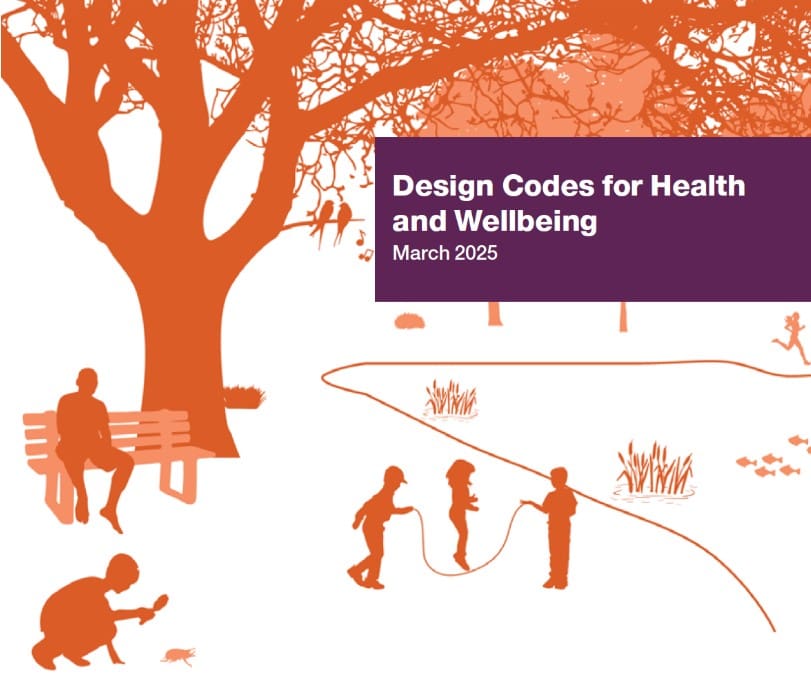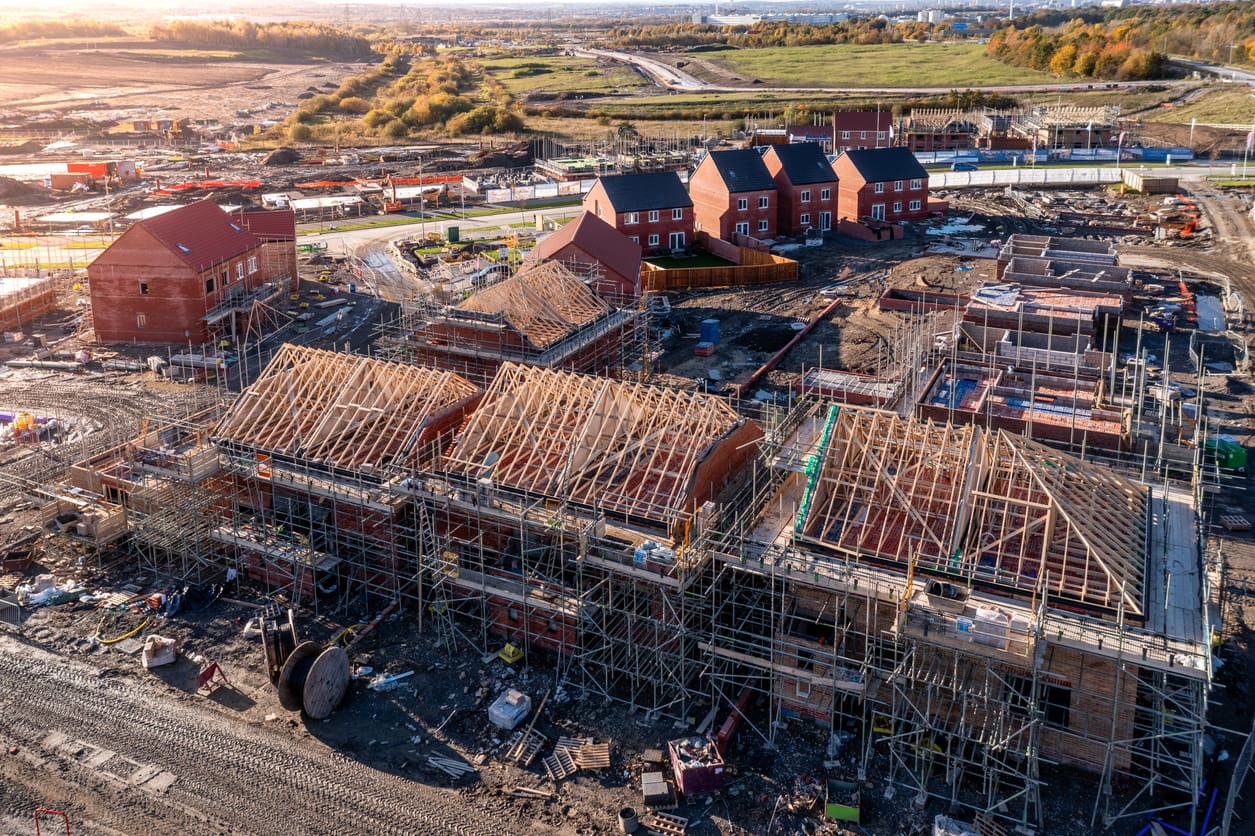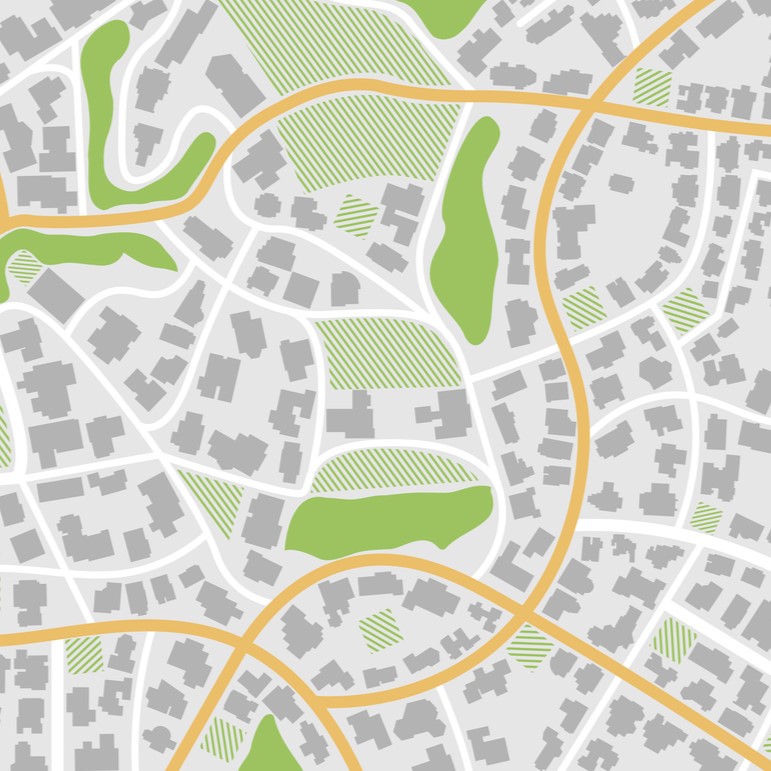Policy and intervention briefings
Explaining our work and the implications for UK policy.

Design Code Guidance – Relevance for Practice
In March 2025, Design Codes for Health and Wellbeing was published to fill an important gap in guidance on principles that should be incorporated in health-focused built environments. The publication is a key resource for planning and health authorities, investment funds and developers seeking to embed healthy ways of life in diverse local place settings and contexts.
Read more...
Adding value to existing government guidance with HAUS
The Health Appraisal of Urban Systems model (HAUS) demonstrates the health impacts of a wide range of characteristics of the urban environment to inform planners, investors and developers at the earliest stage of planning new places to live and work.
TRUUD are working with the Ministry for Housing, Communities and Local Government’s (MHCLG) Analysis & Data Division to adapt HAUS for use in the department and for inclusion in its appraisal guide.
Read more...
Evidence used in the HAUS model
The Health Appraisal of Urban Systems model (HAUS) demonstrates the health impacts of a wide range of characteristics of the urban environment to inform planners, investors and developers at the earliest stage of planning new places to live and work.
Read more...
New towns and grey belts: healthy place making or housing numbers?
Labour’s pledge to jump start housing delivery through New Towns and ‘grey belts’ is an important response both to housing and affordability issues as well as the major economic crises of the last few decades. However, without quality assurance and strategic incentives, this risks becoming a ‘quantity at all costs’ approach.
Read more...
Joining up government for public health
Realising Prevention: Practical Policies for Healthier Society
There is growing recognition that tackling complex social problems, like climate change and health inequalities, can only happen by building strong interconnections across policy jurisdictions and sectors. Over the decades, a slew of initiatives have sought to achieve more joined-up government in the UK, from Churchill’s abortive system of ‘overlords’ through to the short-lived levelling up agenda. Despite these and many similar attempts, Whitehall retains a structure of competing departmental fiefdoms.
Read more...
Empowering mayors for preventative health
Realising Prevention: Practical Policies for Healthier Society
The task of improving the nation’s health is currently split between the NHS and local government. These two vast and complex systems often struggle to work together effectively. The role of local government in England’s health policy should not be underestimated. It includes the £23.69bn social care budget and a £3.6bn public health grant, both of which come with statutory duties that local authorities must fulfil. While this is dwarfed by £181.7bn NHS budget, it is in the areas of social care and public health that we find the roots of the pressures on the NHS. And yet, preventative approaches are only a tiny fraction this vast NHS budget.
Read more...
Planning reform and public health
Realising Prevention: Practical Policies for Healthier Society
With 708,000 overcrowded households in England, it is clear why the government wants to build 1.5 million new homes over the course of the current parliament. In recent years, both parties have repeatedly insisted that reforming the planning system is the key to unlocking housebuilding. The Labour Government have laid out extensive reforms to the planning system in the Planning and Infrastructure Bill.
Read more...
Tackling health inequalities with healthy urban development
Realising Prevention: Practical Policies for Healthier Society
Since the landmark Marmot Review was published in 2010, every Labour and Conservative manifesto has promised to rebalance health from treatment to prevention. And yet, despite the ambitions of politicians, change has been far too slow in recent decades.
Read more...
What ‘health’ means and why that matters
This policy explainer is split into three sections.
1. The first section explains why it is important that that we ask what ‘health’ means;
2. The second examines three main areas of contemporary debate linked to ‘health’; and
3. The third sets out the implications of these for policy and for political responsibility.
We pay particular attention to preventative policies: those that aim to create the right conditions in society for both a lower incidence of ill health, and better and fairer enjoyment of good health by all.

Developing a Healthy Planning Framework
Planning policy, nationally and locally, shapes the environment we live in, and Local Plans can play an integral role in improving both physical and mental population health. Local Plans are produced by local authorities to provide the scope and legal basis for all their urban planning decisions. However, TRUUD research with more than 130 public and private urban development actors in 2021 found that Local Plans are inconsistent and weak regarding the health requirements that are expected from developers when making a planning application.
Read more...
Using health evidence to influence urban regeneration in Bristol
Built and natural environments affect our physical and mental health. However, urban development can result in towns and cities that do not support good health and wellbeing: homes may be of poor quality; greenspaces may be insufficient; cars may dominate with limited infrastructure to support walking and cycling; and social infrastructure, such as community centres or health centres, may not meet the needs of the local community.
Read more...
Shaping the use of health impact evidence for government appraisals and decision-making
Non-communicable diseases such as diabetes, heart disease or asthma account for 89 per cent of deaths in England and ill-health among working-age people is estimated to cost £150 billion a year.
One way to improve and protect public health and reduce this economic burden is through the design and quality of city development. However, current development and planning policies are not managed in a way to address and promote health issues.

Providing health impact evidence for government appraisals and decision-making
Non-communicable diseases such as diabetes, heart disease or asthma account for 89 per cent of deaths in England and ill-health among working-age people is estimated to cost £150 billion a year.
One way to improve and protect public health and reduce this economic burden is through the design and quality of city development. However, current development and planning policies are not managed in a way to address and promote health issues.

Mapping health considerations and multi-sectoral interventions in the urban development decision-making system
The meaningful consideration of health has been consistently low across the different elements of the urban development decision-making system. This encompasses both public and private sector, operating from the national to local levels.
While actions have been taken in the past to facilitate or encourage the consideration of health, they are often aimed at specific actors, domains, processes or otherwise bounded fragments of the larger system.

Using lay knowledge to transform understanding of links between the built environment and health
‘Lay knowledge’ – that is knowledge and understanding held by lay public/s based on their subjective experience – has attained new prominence as a form of evidence for public health in
the UK during recent decades. Collecting and sharing lay knowledge can illuminate the social determinants – that is the conditions in which people are born, grow, live, work, play and age – as well as structural processes which impact on health and lead to health inequalities.

Valuing the external social costs of unhealthy urban developments
The use of economic valuation approaches in measuring, and accounting for, non-market environmental and social “goods and services,” including human health outcomes, has a substantial history. However, its integration into mainstream decision-making has been slow for a number of reasons, not least the considerable challenge of quantifying intangible aspects of health in welfare terms.
Read more...
Low Emission Zones improve air quality, physical health and mental well-being
Ambient air pollution is a major public health concern. It has prompted novel policy interventions, in the UK and beyond, notably in the form of Low Emission Zone (LEZ) and Ultra-Low Emission Zone (ULEZ) schemes. This policy brief explores the impact of these schemes on physical health and mental well-being, using large survey and administrative data covering the whole of England.
Read more...
Health in government housing and transport policies
Action in a wide range of policy areas outside of the healthcare system has the potential to have significant benefits for the health of the population. One example is the development of urban spaces, where a wide range of factors such as housing density, air quality, and cycling and walking infrastructure can protect, improve, or damage public health.
Currently however, policies shaping urban development in the United Kingdom (UK) are not delivering healthy places to work and live. In centralised systems like the UK, national government policy sets the context that urban development takes places in at the local level.

How are local plans promoting healthy and safe communities?
Interest in the building blocks of health is increasingly focused on the role and contribution of spatial planning. The evidence is becoming clear about the effect of policy interventions in the built and natural environment on population health. Achieving healthy places requires planning processes and decisionmakers to proactively consider health and wellbeing.
Read more...
Embedding healthier decision making in the urban development actor network
Senior real estate industry professionals make clear the complex web of decision-makers involved in creating and recreating cityscapes both in the UK and worldwide. The specific objectives of a diverse range of domestic and international UK investor, shareholder, land and property owner, landlord, tenant, and public authority clients they advise and support, are vitally shaped by financial drivers and constraints that are reflected in the built form, environment, and healthiness of urban places.
Read more...
Improving the conversation with real estate for healthier urban planning
The need and potential for urban development and planning to combat the rise in non-communicable diseases (NCDs) such as obesity, hypertension, diabetes and mental depression and spatial health inequities, is clear. In the system of English devolved subnational governance, local planning authorities have substantial powers to control and influence the location, use, height, form, and density of development and the deployment of real estate investment capital in cities.
Read more...
Introducing a health evidence base with Transport for Greater Manchester
The impact of the urban environment on public health is well researched, yet using this knowledge to implements changes in practice is less so. We know that the ability to walk and cycle, the effect of traffic noise and pollution, access to public transport and location of trees and green spaces all impact population health. Translating that into on-the-ground change requires joined up and concerted effort, overcoming political, economic and organisational challenges. Several of the challenges may be most relevant at the scale of a metropolitan area.
Read more...
What needs to happen to ‘level up’ public health?
Reducing health inequalities requires upstream interventions to tackle the wider determinants of health. Wider determinants of health include things like education, employment and the places that we live and work.
The government’s 2022 Levelling Up White Paper set out an ambitious plan to reduce inequalities in the United Kingdom (UK). It includes 12 ‘missions’ through which this will be achieved.

Making meaningful public engagement with digital tools
Digital tools are increasingly used in urban planning for engaging the public in early-stage discussions and formal consultations in their local area. Investment in digital tools by both national and local government growing apace. We want to examine how involvement of the public in urban planning and development, particularly those facing health inequalities, can be made more meaningful.
Read more...
Law, health and planning: Using Health Impact Assessments to improve urban health
Local government urban planners can lack legal capacity to promote healthy urban developments. This means, for example,they can lack confidence, resource or knowledge that would help them use the law to promote health; to reduce the risks of noncommunicable diseases (including poor mental health) and reduce health inequalities. This lack of capacity undermines their ability to effectively incorporate health into decisions about individual applications and ensure that health is given due weight in urban decision making.
Read more...
What types of health evidence are persuasive in a complex system?
Tackling complex health problems requires joined up cross-sector working between stakeholders with diverse objectives. Evidence is one tool that can be used to bring stakeholders together and to influence decision-making processes. However, the challenge of using evidence to persuade policy actors to think more about health is enhanced when working in a complex system with multiple stakeholder groups with different priorities, preferences, values and skills.
Read more...
Changing corporate mindsets for healthier urban development decision-making.
When speaking to decision-makers in urban development, they make two things clear: one, current thinking around urban development and how it is practiced is not well suited to respond to complex issues such as climate change and health crises; and two, very few people feel they have sufficient power to be able to bring health and health equity more centrally into their own professional practice.
Read more...
How value is considered and used in urban development with implications for the levelling up agenda.
Examining how value is considered and placed in the decision making process for urban development reveals who shapes the rationale. Where is the influence and how does this affect urban development? What does this mean for health in decision making processes?
Read more...
Revealing the health costs of the urban planning policy environment
The design and quality of city development can have a positive impact on the health, wellbeing and opportunities for communities.
Current development and planning policies are not managed in a way to address and promote health issues and inequalities. Non-communicable diseases such as diabetes, heart disease or asthma account for 89 per cent of deaths in England and ill-health among working-age people is estimated to cost £150 billion a year.
